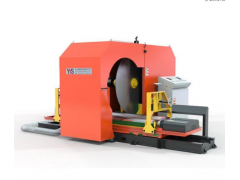Although U.S. waste paper exports have fallen over the past year, recyclers are still shipping more waste paper overseas due to the slow development of the European paper industry. The pulp industry division of the Washington-based Recycled Materials Association has been watching the downward trend in U.S. waste paper exports, which has affected the market in 2023 and has continued throughout the year.
Although China is slightly open again to imports of waste paper that meets certain standards, China's withdrawal and the adjustment of waste paper acceptance standards by domestic mills in the United States have led to changes in the import and export pattern, at least in the short term. In the European market, the decline in Chinese demand has indeed had a certain impact, but in the past two years, this trend has been offset by various geopolitical factors and changes in the recycling market environment. These changes have led to a surplus of waste paper on the European continent, and more waste paper is now flowing to overseas markets.
Detailed recycling and shrinking terminal markets
In 2023, the European paper and board industry cut production, resulting in it using less recovered paper than in 2022. This change led to a 33% increase in recovered paper exports from Europe in 2023 compared to the previous year. This is one of the key findings of the European Paper Industry Federation in Brussels in its 2023 report.
The report of the European Paper Industry Federation details the overall performance of the European paper and recycling industries in 2023, providing information on European and global demand and supply conditions. Data shows that in 2023, the CEPI region's waste paper exports will exceed 9.4 million tons, while in 2022 this figure was less than 7.1 million tons, an increase of 33%.
On the supply side, the European Paper Industry Federation reported that the recycling rate of waste paper and cardboard in Europe reached 79.3% in 2023, of which 82% of recovered paper was consumed within Europe and the remaining 18% was exported outside the European Paper Industry Federation region. In contrast, the export rate of European waste paper in 2022 was 14%.
European countries lead the world in paper recycling, partly because of the high costs of landfill and other disposal options, but also because officials are working to meet European Union packaging recycling targets.
The European Paper Industry Federation itself has organized a number of recycling programs to ensure that its member companies have access to sufficient recycled paper raw materials. These include the 4evergreen program, which aims to increase the recycling rate of paper and board in Europe to 90%.
“We have been experiencing a rapid growth in recycling since the 1990s,” Jory Lingemann, director general of the European Paper Industry Federation, said at a July press conference to detail the contents of the 2023 report. Lingemann also noted that the recycling rate in the European Paper Industry Federation region in 2023 set a new European record.
Active recycling activity has led to the EPC region exporting 9.4 million tonnes of recovered paper in 2023. The EPC region includes more than 850 mills and, while its scope is not entirely equivalent to the EU, most EU countries as well as Norway and the UK are within its coverage area.
More than 88% of recovered paper in the EPI region is exported to Asia, with most of the rest exported to non-EPI Europe. Turkey received about half of the non-EPI Europe export share, accounting for 11% of the total exports. Another reason for the surplus of recovered paper in Europe last year was that paper mills were operating at below-design capacity, which EPI attributed in its July briefing to a combination of factors.
Close to the local market
According to the Washington Recycling Materials Association, the growth trend of Europe's global waste paper trade is the opposite of that of the United States. Last year, the export volume of recovered paper from the United States fell by 18% and continued to decline in early 2024. A report released by the Washington Recycling Materials Association in March this year showed that compared with 2022, the export of waste paper from the United States continued to decline throughout 2023, and this trend continued into this year.
Data shows that in the first quarter of 2024, the volume of U.S. recovered paper exports fell 19% to just 2.98 million tons, while the total value of these exports also decreased by nearly 17% to $600 million.
The downward trend in monthly data is even more pronounced. U.S. waste paper exports fell by about 23% in March 2024 compared to March 2023; however, ReMA noted that despite this, exports in March 2024 still rebounded compared to February, up 5%.
Similar to Europe, the U.S. paper industry also suffered a setback in production in 2023. According to a report by the Washington-based American Forest and Paper Association, total U.S. paper and paperboard production in 2023 decreased by 7.2% from the previous year, with production in all categories except tissue paper declining.
However, unlike Europe, the US recyclables collection system is more flexible and market-driven, which partly explains why US waste paper exports have not grown.
In addition, the United States has also increased investment in waste paper pulping capacity, increasing the recycled content of domestically produced paper and paperboard. According to the American Forest and Paper Association, several large mills were put into operation in 2023, adding a total of 2.1 million tons of 100% recycled paper production capacity. These mills include the Domtar conversion plant in Tennessee, the Cascades containerboard mill in Virginia, and the Pratt Industries paper mill in Kentucky.
Another report from the American Forest and Paper Association pointed out that in 2023, the United States also permanently closed more than 1.7 million tons of production capacity that mainly uses virgin wood fiber as raw materials.
In terms of export markets, Thailand is the largest importer of U.S. waste paper in the first quarter of 2024, with imports approaching 550,000 tons. However, this figure is down nearly 27% from 750,000 tons in the first quarter of 2023.
India was the second largest importer of U.S. waste paper in the first quarter of this year, with imports of nearly 515,000 tons, but it was nearly 25% lower than the first quarter of 2023. In addition, other major import destinations and their import volumes in the first quarter of 2024 were: Mexico (461,000 tons), Malaysia (429,000 tons), Vietnam (270,000 tons), Canada (240,000 tons), South Korea (133,000 tons), China (121,000 tons), Taiwan, China (97,000 tons) and Indonesia (57,000 tons).
The United States exported 6.57 million tons of waste paper in the first half of the year. The top three countries for waste paper imports are...
Challenges in the energy industry
At a briefing in July, Jory Lingemann, director general of the European Paper Industry Federation, and Bernard Lombardy, director of trade and industrial policy, described two major dilemmas facing the European paper industry in 2023: high operating costs and excess inventory.
In 2023, the production of all types of paper and board in the European Paper Industry Federation region declined, with packaging paper production down 9.5% year-on-year, household paper down 4%, and printing paper down a sharp 24.2%.
The roots of this dilemma can be traced back to before the COVID-19 pandemic. After the outbreak, supply chains were disrupted, and the subsequent Russian-Ukrainian war led to a significant reduction in supply from Russia, a once important energy supplier, causing energy prices to soar for European paper mills in 2022. The European Paper Industry Federation pointed out: "Current energy prices are still nearly twice as high as before the pandemic, which has seriously weakened the competitiveness of European industry."
In addition to energy prices, another factor affecting the industry is the long-term accumulation of excess inventory. Although these stocks were gradually depleted last year, their existence still suppressed paper and paperboard orders and production, leaving the industry at a much lower level than in previous years. The European Paper Industry Federation specifically mentioned at a briefing in February that German carton manufacturers had a large amount of stockpiling in 2022 due to supply chain disruptions caused by the epidemic and concerns about the continuity of the supply chain, which made the problem worse. Although the destocking process continued for most of 2023, the problem has been largely alleviated as of the beginning of this year.
While the European paper industry is facing difficulties, China's demand for pulp in the region has become a bright spot. Due to restrictions on environmental policies, Chinese factories have reduced imports of old corrugated boxes and other waste paper, and instead increased demand for commodity pulp exported from Europe. In 2023, commodity pulp exports in the European Paper Industry Federation region increased by 47.8%, mainly due to the promotion of the Chinese market. The European Paper Industry Federation defines commodity pulp as pulp that does not contain recycled materials, and its main producers are Sweden and Finland, which have rich forest resources. The European Paper Industry Federation is optimistic about Europe's use of its own recycled paper production capacity and believes that the productivity of factories will increase in 2024.
The push for local action
Lingemann and Lombard said at a press conference that although energy costs in Europe are still higher than in North America and other regions, energy prices have gradually fallen since 2022, which brings positive signals for the start of 2024. With inventories reduced, European paper and paperboard producers increased their production by 6.6% in the first quarter of this year compared with the same period last year.
Despite these positive signs, the European Paper Industry Federation, together with other European industry groups, is still actively promoting the so-called "Industrial Agreement" to complement the EU's Green Deal. In February this year, 73 business leaders from 17 industries jointly submitted the "Antwerp Declaration on a European Industrial Agreement" to European Commission President Ursula von der Leyen and the Belgian Prime Minister. More than 1,000 organizations and companies covering 25 industries have supported this declaration, calling for the development of a European Industrial Agreement to complement the EU's Green Deal and safeguard jobs in Europe.
The alliance stressed: "European industry is currently facing its worst economic recession in a decade, and this is the time when strong investment is needed to drive Europe's transition to climate neutrality. Urgent action is needed to restore business confidence in investing in Europe."
“We expect legislation to be more supportive of investment,” Lingemann said. “Ideally, legislation should simplify regulatory requirements and speed up investment cycles to accommodate the faster pace of legislation. We understand that Europe tends to have red tape, but no one needs so much.”







